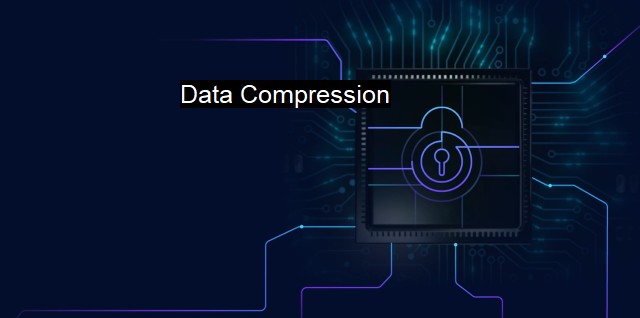What is Data Compression?
The Importance of Data Compression Techniques in Cybersecurity: Enhancing Efficiency and Security in File Transfer and Storage
Data compression is an aspect of data retention vital across multiple sectors, especially in the realm of cybersecurity and antivirus software. An appreciation of its concept, manner of operation, and functionality within these pro-internet safety industries brings about fresh perspectives on how these activities coalesce for everyday protection against unwanted intrusions and malware.Data compression refers to the reduction of the size of data files for storage purposes. By leveraging various mechanisms and algorithms to minimize the number of bits constituting a piece of information, the primary goal of data compression is to preserve the original information in a more compressed form that occupies significantly less space than the original version. This method aids businesses, organizations, and individual data admins to be cost-effective in terms of storage usage as well as facilitating faster transmission of data across networks.
The process of data compression is essentially a redrawing of data into an encoded format involving fewer bits than the initial form. Compression could assume a lossless form or a lossy one, depending on the preservation or otherwise of the original information post the compression activity. lossless compression takes precedence— there's no room for loss of data as such might involve parts of files critical to the prevention, detection, and elimination of security breaches. Hence, lossless compression is preferable for executable codes, document files, HTML files and more.
Think of antivirus software. These suites require a wealth of data, encapsulating various strands of algorithms and base codes having the core function of countering unwanted software threats. Efficiency in operations for antivirus offerings is depicted by the volume of handling power utilized to pull off tasks. Executable files are quite voluminous: compressing them paves way for faster responses from antivirus software while perusing local files on host devices as well as facilitating prompt installation and update operations. Data compression plays an essential role in performance optimization for antivirus software operations.
In the broader spectrum of cybersecurity, data compression materializes as a potent tool against data breach incidents. Compressed data could insulate organizations from potential attacks by outsiders as compressing data obfuscates the components within a given data file or structure. Consequently, breaking into databases proves tough. The headache extends from the need by the attacker, to not only gain access but comprehend the very logic in which the data is rewritten by the specific compression algorithm deployed.
It is crucial to note the potential downside that compression might have on cybersecurity. A significant chunk of modern-day attacks come in highly compact forms – made feasible with compression tools. Malicious software delivered into systems often arrive compact, swiftly slipping past network barriers courtesy of their small sizes.
Once such malware gets unleashed within a host system, its compressed state lets it mask its operation thread from cybersecurity watchdog machinery, i.e., Intrusion Detection Systems. Virus strikes such as the infamous 'Zip Bomb' leverage data compression to deliver cataloged payloads of recursion-based attacks.
Data compression is an instrumental technique within the wider field of computer systems, attesting particular significance in the realm of cybersecurity and antivirus software. As cybersecurity solutions progressively engage data compression techniques to expedite stronger shields against cyber threats, a paradox emerges with hackers themselves using compressed data forms to deliver high-grade cyber threats. with an advanced understanding of how data compression algorithms work, a surge in more robust cybersecurity safeguards is perceivably within reach. The lure of data compression remains fundamentally in providing more space for valuable data storage while enabling faster data transmission for tasks relating to cybersecurity.

Data Compression FAQs
What is data compression in the context of cybersecurity?
Data compression in cybersecurity refers to the process of reducing the size of data files without losing or altering any information. It is used to optimize the use of storage space, reduce transmission time, and enhance the overall system performance.How does data compression help in antivirus software?
Data compression helps in antivirus software by compressing the data files before scanning for viruses. This helps to reduce the scanning time, thereby improving the performance of the antivirus software. In addition, compressed files take up less storage space, which is beneficial for users with limited storage capacity.What are the common types of data compression algorithms used in cybersecurity?
The common types of data compression algorithms used in cybersecurity are the LZ77/LZ78 algorithm, Huffman coding, Arithmetic coding, and Lempel-Ziv-Welch (LZW) algorithm. These algorithms are designed to compress data files efficiently, while maintaining their integrity and preserving the original content.What are the potential risks of using data compression in cybersecurity?
The potential risks of using data compression in cybersecurity include the possibility of data loss or corruption due to errors in the compression process. In addition, compressed files may be more vulnerable to attacks by hackers, as they may contain hidden malware or viruses that can be activated when the file is decompressed. Therefore, it is important to use reliable and secure data compression software when compressing valuable or sensitive data.| | A | | | B | | | C | | | D | | | E | | | F | | | G | | | H | | | I | | | J | | | K | | | L | | | M | |
| | N | | | O | | | P | | | Q | | | R | | | S | | | T | | | U | | | V | | | W | | | X | | | Y | | | Z | |
| | 1 | | | 2 | | | 3 | | | 4 | | | 7 | | | 8 | | |||||||